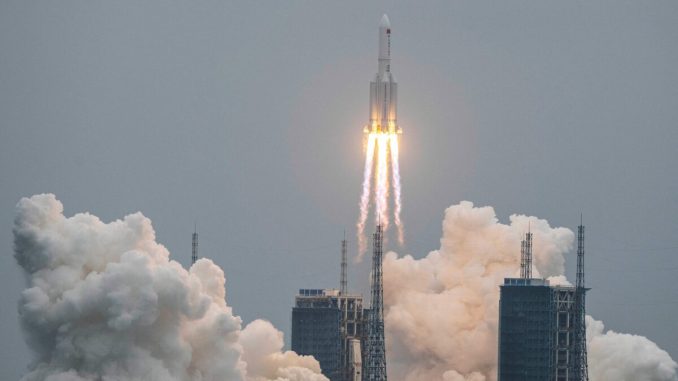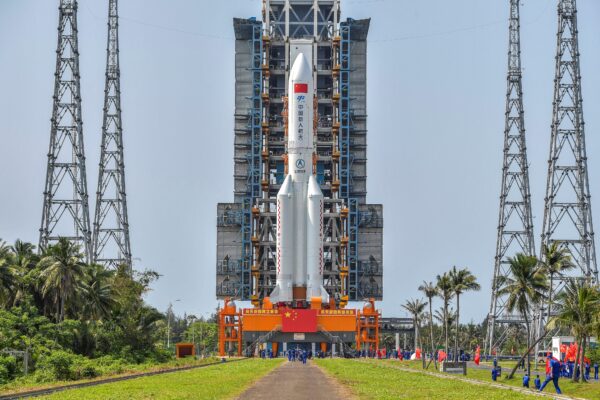
The U.S. Space Command is tracking uncontrolled debris from a Chinese rocket that sent part of a planned space station into orbit last week, the White House said on May 5.
The debris comes from the Long March 5B rocket launched on April 29 to deliver a new 22.5-tonne module for China’s Tianhe space station. The debris has since reached orbital velocity, meaning it is circling the planet instead of falling back to Earth within a predetermined area as usually happens with the debris from U.S. launches.
Losing its ability to restart its engines, the debris is tumbling on a trajectory towards Earth at over 17,000 miles per hour and its reentry point can’t be predicted accurately at present.
“Its exact entry point into the Earth’s atmosphere cannot be pinpointed until within hours of its reentry, which is expected around May 8,” U.S. Department of Defense spokesman Mike Howard said in a statement on May 4. “We will provide additional information as it becomes available.”
“The United States is committed to addressing the risks of growing congestion due to space debris and growing activity in space and we want to work with the international community to promote leadership and responsible space behaviors,” White House press secretary Jen Psaki said at a news briefing.
The debris is 30-meters-tall and 5-meters in diameter and will burn up in some parts as it collides with molecules while reentering Earth’s atmosphere.
Space-track.org is tracking the debris’ descent and as of 22:46 (ET) on May 4 the site predicted the debris might reenter the atmosphere at 22:11 on May 8.
Because the module’s orbital inclination is 41.5 degrees, the debris would reenter the atmosphere somewhere a little farther north of New York, Madrid, and Beijing, or as far south as southern Chile or Wellington, New Zealand.

The Long March 5 series is China’s most powerful rocket and has been launched seven times in history. The Wenchang Space Launch Center in southern China’s Hainan Province is its official launch center.
The Chinese regime announced the launch on April 29 as a success despite the uncontrolled reentry of its debris.
This is not the first time debris from Chinese space activities has fallen uncontrollably back to Earth.
In 2017, a Long March 5B rocket had a failed launch after one of two core engines failed shortly after take-off, Chinese state media reported. The rocket fell back to Earth from the atmosphere.
In 2018, China’s Tiangong-1 defunct space station re-entered the earth’s atmosphere and mostly burnt up over the middle of the South Pacific near Tahiti, the Chinese space authority reported. The vast majority burnt up upon entry. This was also an uncontrolled reentry but despite fears about where it might land the Chinese regime said it would be a “gorgeous and magnificent” show.
Last year, another Chinese Long March 5B rocket fitted with a prototype version of China’s next-generation crew capsule tumbled back to earth. It was the largest object to fall out of orbit in decades.

The Chinese regime is preparing to send a crewed spaceship—Shenzhou 12—to dock with the Tianhe in June. Chinese media reported on April 15 that the Long March 2F rocket and the spaceship were shipped to the Jiuquan Satellite Launch Center in northwestern China’s Gansu Province and the center is preparing for the launch.





Be the first to comment